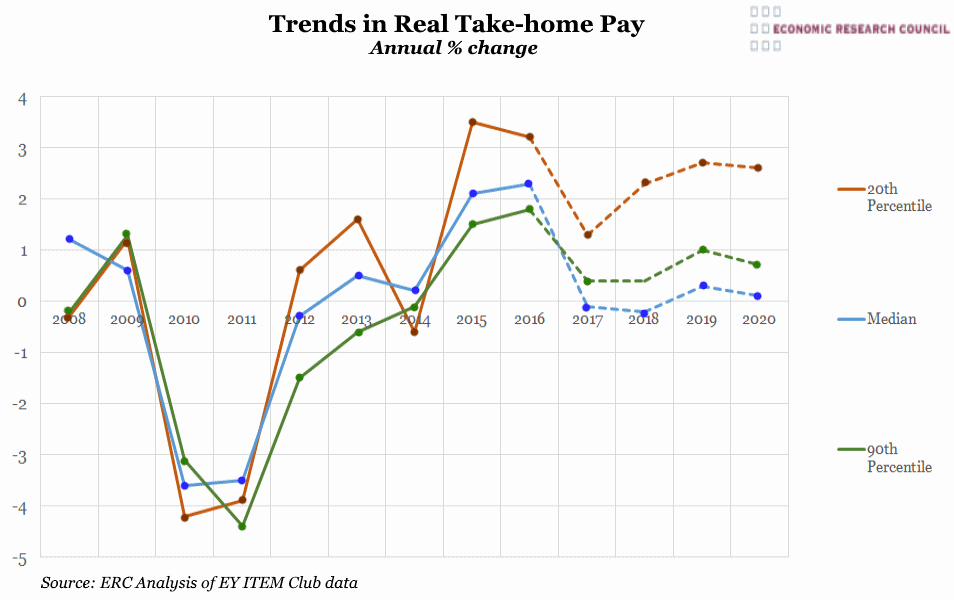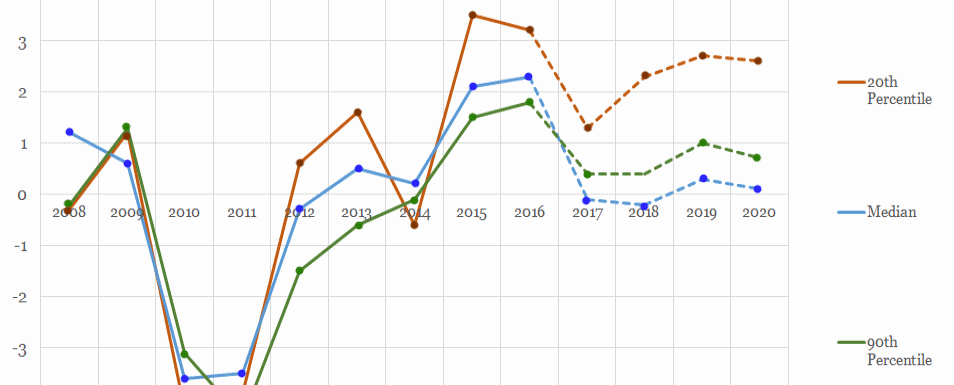
Summary
The chart shows that take home wages for the 2nd and 9th decile of earners have been strongly correlated in the years since the financial crisis. Earners in the 20th percentile have seen their wages shrink compared to the preceding year in four out of past 9 years, whereas wages of those in the top bracket decreased in six. Following the crash, wages for the lowest earners initially fell more sharply than those at the top, but recovered more quickly comparatively.
What does the chart show?
The chart displays how the earners in the top and bottom income brackets have experienced changes in their take-home pay since 2008, adjusted for inflation. The chart shows the percentage annual change in take-home pay from the years 2008-2016 in real terms, as well as projections from 2017 through to 2020, shown by the dotted lines. The orange line shows the change for the 2nd decile of earners; the blue line for the 5th decile (the median), and the green line represents earners in the 9th decile. The 1st decile was excluded because the lowest earning 10% of the population will generally be the national minimum wage earners, whose wages are not as exposed to changes in the market and whose income doesn’t fluctuate as much due to changes in fiscal policy.
Why is the chart interesting?
There is a marked jump in take-home pay between 2014 and 2015, which is likely attributable to the raising of the personal tax allowance, allowing workers at the lower end of the income distribution to take home a greater proportion of their wage packet. In 7 out of the 9 years from 2008-2016, top earners were below the median take-home wage growth rate, but are forecast to see increases that exceed the median growth rate in the coming 4 years. For the lowest 20% of earners, 5 out of the last 9 years’ wage growth exceeded the median rate, and indeed it is forecast to remain well above the median and also above the top 10% of earners between now and 2020.
According to Mark Carney in February, wage growth will be a key driver in the Bank of England’s willingness to tolerate post-Brexit inflation in excess of its 2% target- it remains to be seen whether the Bank will alter interest rates in the near future.

